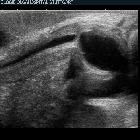potter sequence
The Potter sequence is a constellation of findings demonstrated postnatally as a consequence of severe, prolonged oligohydramnios in utero.
Clinical presentation
It consists of:
- pulmonary hypoplasia: often severe and incompatible with life
- growth restriction (IUGR)
- abnormal facies (Potter facies)
- low set ears
- flattened nose
- wrinkled skin
- micrognathia
- limb abnormalities: including club feet and contractures
These common clinical features can be easily recalled using the mnemonic POTTER.
Pathology
Although originally associated with renal causes of olighydramnios, the Potter sequence may be seen with severe oligohydramnios of essentially any cause.
Common etiologies include:
- fetal renal insufficiency
- bilateral renal agenesis: traditionally known as the classic Potter syndrome
- autosomal recessive polycystic kidney disease
- posterior urethral valves, and other causes of antenatal renal tract obstruction
- premature rupture of membranes (PROM)
- twin-twin transfusion
Treatment and prognosis
The prognosis is poor with a very high mortality rate, primarily secondary to pulmonary hypoplasia.
History and etymology
It is named after Edith Louise Potter (1901-1993), an American pathologist who described the syndrome specifically in association with bilateral renal agenesis .
Siehe auch:
- Lungenhypoplasie
- Mikrognathie
- Oligohydramnion
- einseitige Nierenagenesie
- Klumpfuß
- Intrauterine Wachstumsretardierung
- Urethralklappe
- low set ears
- autosomal recessive polycystic kidney disease (ARPKD)
- premature rupture of membranes (PROM)
- twin-twin transfusion
und weiter:

 Assoziationen und Differentialdiagnosen zu Potter-Sequenz:
Assoziationen und Differentialdiagnosen zu Potter-Sequenz:autosomal
recessive polycystic kidney disease (ARPKD)







